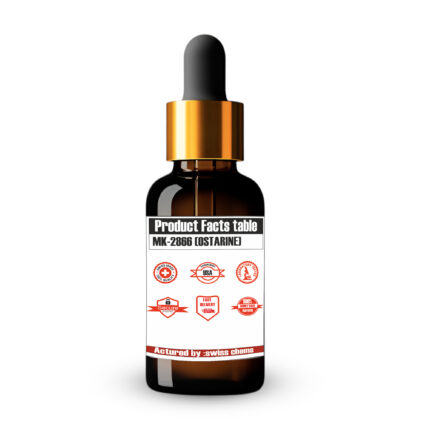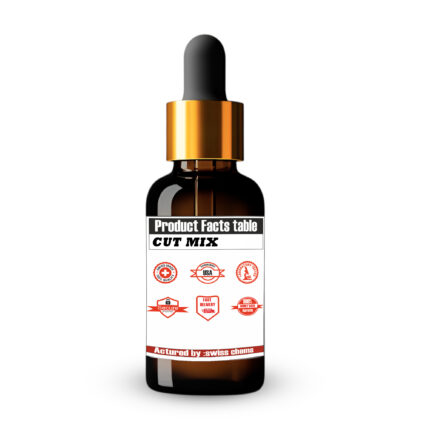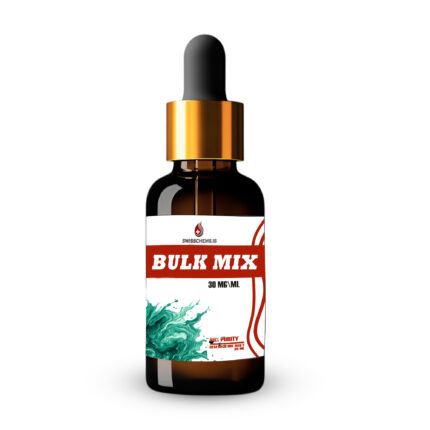SARM YK 11
$53
SARMs YK-11, one of the newest SARMs for sale, acts as a gene-specific agonist of the androgen receptor (AR) in MDA-MB 453 cells. YK 11 works on a variety of different anabolic pathways. YK-11 has shown greater anabolic activity in vitro in C2C12 myoblasts than DHT. YK11 promoted a cascade of muscle growth and key myogenic regulatory factors in skeletal muscle tissue such as myogenic differentiation factor (MyoD), myogenic factor 5 (Myf5), to a significantly greater extent than DHT.
SARMs YK-11, one of the newest SARMs for sale, acts as a gene-specific agonist of the androgen receptor (AR) in MDA-MB 453 cells. YK 11 works on a variety of different anabolic pathways. YK-11 has shown greater anabolic activity in vitro in C2C12 myoblasts than DHT. YK11 promoted a cascade of muscle growth and key myogenic regulatory factors in skeletal muscle tissue such as myogenic differentiation factor (MyoD), myogenic factor 5 (Myf5), to a significantly greater extent than DHT.
This can in part explain why YK11 exerts its selective modulation of the AR. Unlike testosterone and most other AR mediated anabolic agents, YK-11 is orally bioavailable so it does not require injection for proper absorption. At this time YK-11 is for laboratory research use only and the side effects are not fully known.
YK 11 Benefits from Clinical Research
Muscle Growth
What really sets YK-11 apart is that a key component of its anabolic activity is modulated via expression of follistatin. They discovered this by co-administering anti-follistatin antibodies with YK 11 to measure the difference in effects. Follistatin has been shown to promote insulin-stimulated glucose and amino acid uptake into skeletal muscle cells, improving insulin sensitivity directly and increasing skeletal muscle mass . Follistatin proteins also block inhibitory ligands from binding to Transforming Growth Factor-ß.
Follistatin Effects on Muscle Tissue
Perhaps the most alluring effect of follistatin is the binding and neutralizing of catabolic proteins Activin A, Activin B, and Myostatin. Unfortunately, follistatin proteins themselves undergo rapid proteolysis and have limited bioavailability and half-life even when injected directly into a wasting muscle. YK-11 however stimulates the body to produce more follistatin proteins systemically and locally which may circumvent this shortfall of direct follistatin administration and promote muscle growth.
Muscle Wasting
Animal studies have investigated the effects of YK 11 as a potential treatment for sepsis-induced muscle wasting. Researchers observed protective effects on muscle tissue and organ tissue, as well as suppression of gram-negative bacteria-induced cytokine inflammation. Mortality rate in eight-week-old septic mice treated with YK-11 also decreased significantly. They concluded that this was due to the suppression of myostatin as well as an increase in the expression of the follistatin gene.
Bone growth
YK11, in combination with dihydrotestosterone (DHT) was found to accelerate cell proliferation and mineralization in MC3T3-E1 mouse osteoblast cells. YK11 treatment also induced the expression of osteoblast-specific differentiation markers, such as osteoprotegerin and osteocalcin, compared to untreated cells. These effects were diminished by treatment with an androgen receptor (AR) antagonist, indicating that the androgen receptor mediates the observed results.
Mechanisms for Bone Recovery
Investigation into the mechanisms of YK11’s action on the AR revealed that it activates non-genomic signalling via phosphorylation of Akt protein. This signaling pathway is known to be a key regulator of androgen-mediated osteoblast differentiation, making it a promising candidate for future research in the field of bone tissue engineering.





















Reviews
There are no reviews yet.